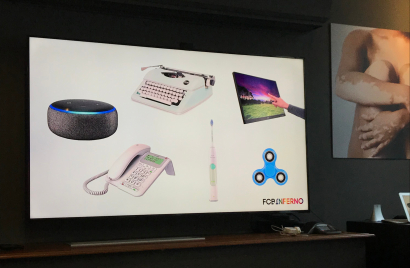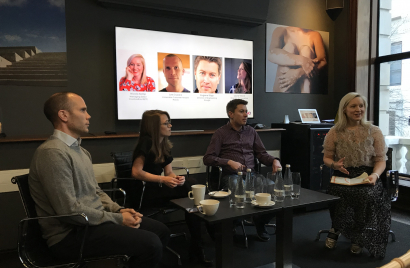
Virgin Media O2 launches summer online safety campaign
Virgin Media O2 and Internet Matters spotlight the importance of having conversations about online safety and starting them early

FCB Inferno’s Tech-cessibility event shone a light on how brands such as Monzo and Google are prioritising accessibility.

There are 13.9 million people with disabilities in the UK with an estimated spending power of over £250 billion. Yet these consumers are often left out of the conversation, both in terms of initial design but also further down the line when planning and marketing decisions are made. But as Laura Visick, Director of Innovation at FCB Inferno explained: “Thinking about others can boost innovation.”
Speaking at FCB Inferno’s Tech-cessibility event which set out to explore how brands can benefit by making the world more accessible, Visick pointed out that many of the most innovative products were initially created for people with disabilities. In creating products like the typewriter, electric toothbrush and voice activated devices for those with disabilities, designers inadvertently made products that are more seamless to use and thus better for everyone.
A panel, chaired by BITE’s Managing Editor Nicky Kemp, explored this point further by examining how companies can best design for those with disabilities and how they can engage with the communities they’re designing for. Visick was joined on the panel by Eugene Stipp, Director of Engineering at Google who noted that, “it is a fundamental human right for everyone to have the same access to technology.” An approach which has resulted in Google shifting the way it designs so that they are “thinking about accessibility from the start,” he added. The engineering team are also made to test products with their eyes closed; if they can’t use it then the idea goes back to the design team.
Brands that don't build for everybody will disappear.
Eugene Stipp
Lew Isaacs, Vulnerable Customer Analyst at Monzo shared his belief that designing for everyone only makes the overall product better in the long run. Isaacs believes that the conversation around accessibility isn’t just around the usability of the brand’s app but rather who can get access to it in the first place. For him, it’s about asking, “is the environment fit for purpose?” He adds; “universal access is a better way of framing it.”
The panel discussed the importance of speaking to those you’re looking to design for, whether that’s in focus groups or through specifically created channels. For Stipp at Google this has meant, as part of their annual UX research in cities around the world, they invite people with disabilities to be part of the discussion. He believes in the importance of “working together, engineers, designers and people in the community; innovation often happens right there.”
Monzo have created a direct line of communication with consumers called Share With Us, where customers can feedback to the company about the way that they specifically want to be contacted or changes they think need to happen within the app. Isaacs says that “recognising people’s preferences allows you to tailor their account.” It is an approach which reflects how making a product more accessible can create a better product for all. As Kemp explained: “These changes surely make the brand more empathetic to all customers, not just those who ask for it.”


Accessibility is an issue for every consumer. “We’re all excluded from certain things at certain times,” says Isaacs pointing to the reality that we will all deal with some kind of disability, whether mental or physical in our lifetime. “Brands that don’t build for everybody will disappear,” said Stipp, adding that “hopefully people will start choosing products and brands that work for everyone.”
Accessibility is key to building inclusive cultures and attracting the best talent. “You have an engaged workforce who want to make a difference to society,” explained Isaacs. Monzo hires people who are hungry to have an impact; they’re socially and environmentally aware. Isaacs added, “people want to get involved in things that matter.”
Diverse workforces drive accessibility. “Mobilise your community and workforce to share points of view,” Visick believes, citing the importance of hiring a diverse workforce so that your audience are also reflected in the team creating the work. She adds, “Keep speaking to the people you’re designing for.”
Legislation will push the accessibility agenda. For Isaacs, while cultural changes are important, he believes that “legislation doesn’t go far enough; our regulation should get tighter.” Changing culture and legislation simultaneously will make the real difference.
Looks like you need to create a Creativebrief account to perform this action.
Create account Sign inLooks like you need to create a Creativebrief account to perform this action.
Create account Sign in